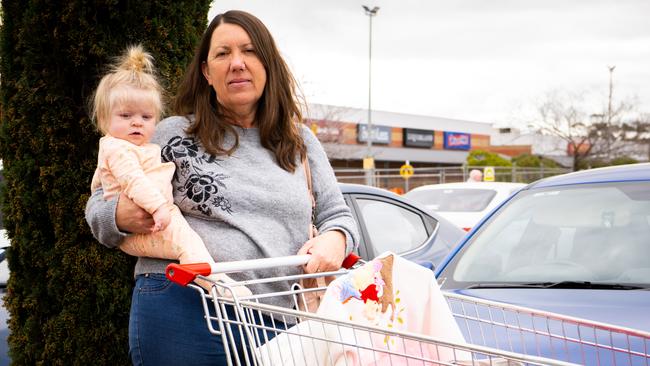Cost of living crunch is hitting hardest in Playford, Salisbury, Gawler-Two Wells and Onkaparinga
Exclusive research shows the areas of Adelaide where rising prices are biting the hardest. Is inflation putting the squeeze on household budgets in your area?
SA News
Don't miss out on the headlines from SA News. Followed categories will be added to My News.
People in Adelaide’s outer suburbs are hardest hit by steep cost-of-living increases, particularly surges in petrol and food prices, exclusive research shows.
Latest regional inflation data shows northern and southern metropolitan areas of Playford, Salisbury, Gawler-Two Wells and Onkaparinga have surged by more than 5 per cent in the past year.
The Australian National University research, commissioned by News Corp Australia, also showed annual consumer price index surges of 5 per cent in Tea Tree Gully and Port Adelaide regions, along with 4.9 per cent in the Adelaide Hills.
By contrast, the lowest inflation increases in 2021-22, of 4.5 per cent, were in the affluent inner-suburban areas of Unley and Burnside.
The trend is mirrored in all Australian capitals, the ANU research found, and was attributed to outer areas paying more for petrol, both for commuting and for freight transport.
Researchers said people on lower incomes tended to spend more on food, which has risen steeply in price, as a proportion of their household budgets.
Community service groups report some retailers in outer suburbs deliberately jack up prices in suburbs where people’s travel options are limited.
Separate Treasury and Finance Department (DTF) analysis provided by Treasurer Stephen Mullighan shows housing and transport were the major contributors to Adelaide price growth.
“These figures clearly show how hard it is for South Australians to avoid the huge increases in prices for everyday essentials such as food, fuel and housing,” Mr Mullighan told The Advertiser.
The DTF analysis of Australian Bureau of Statistics and the ANU data shows annual changes of 37.1 per cent for automotive fuel, 23.5 per cent for new home purchases by owner-occupiers, 16.3 per cent for private motoring and 15.9 per cent for transport.
This analysis also says inflation is harder on people who are more heavily reliant on private motor vehicles for transport.
Mr Mullighan argued his June 2 state budget had doubled and brought forward cost-of-living concessions, introduced free public transport for pensioners, limited fee growth and implemented no new taxes.
He left open the prospect of further measures, saying: “We will continue to look at options to help ease the burden for South Australians to provide relief where it’s needed most.”
South Australian Council of Social Service chief executive Ross Womersley said: “We also hear of stories where some retailers may deliberately price up because they know a large proportion of the people in a neighbourhood may not easily have the means to travel far to shop.
“Sometimes this may be legitimately explained as increased delivery/freight costs but this seems less plausible when distribution centres and wholesalers are actually closely located to the outer suburban areas concerned.”
Shadow treasurer Matt Cowdrey argued most South Australians needing help had been left in the lurch, when other governments had planned ahead and delivered “serious cost-of-living relief in the form of utilities and transport subsidies”.
“For months, we’ve been raising Labor’s lack of cost-of-living relief to support the wider community when other jurisdictions saw this crisis coming from a mile away,” he said.
Fuel costs are hitting hard
Having to fork out about $100 a week on petrol for her daily drive to work is just one of the major expenses hitting Margaret McBride’s hip pocket.
Ms McBride, 54, of Munno Para West, has to commute about 35km to her job as an administrator in inner-city Hindmarsh.
She said the cost of living for people in Adelaide’s northern suburbs was becoming “unbearable”, with many having to drive long distances daily.

“Well you know you’re losing a fair whack of your wage straight up,” Ms McBride said.
“I’m not too bad, I don’t have to pay for parking, but for the people who have to pay for parking on top of that is crazy.”
Ms McBride said the state government could do more to lessen the blow for South Aussies, by legislating caps on what could be charged at the pump.
“(The state-government should) maybe put legislation on the fuel costs,” she said.
“I think people are charging whatever they want to charge.
“You can’t tell me that it’s OK to be $1.41 one day and then $2 the next, that’s definitely not right.
“Somebody is making a lot of money and I don’t believe it’s the right person.”
More Coverage
Read related topics:Cost of Living




